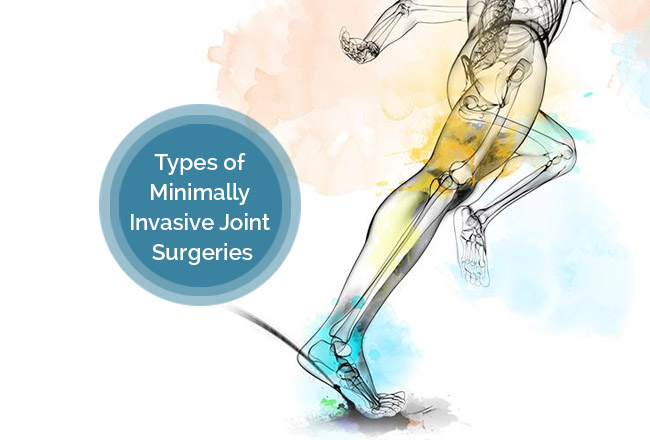Types Of Minimally Invasive Joint Replacement Surgeries
Published on October 7, 2019 By Dr. Vivek Mittal
With a sea change in the medical technology, minimally invasive approach is catching many eyes due to being less invasive causing minimum damage to the tissues and muscles. This surgical approach encourages less pain, minimum blood loss and faster recovery.
3 types of minimally invasive joint replacement surgeries;
- Minimally invasive surgery for knee replacement
Minimally invasive surgery for knee replacement can be defined as the surgical procedure which involves less cutting of the tissue surrounding the knee. This also involves the use of artificial implants the same as those used in traditional knee replacement surgery. The major difference is the use of specially designed surgical instruments used to prepare the femur and tibia and to place the implants properly.
The minimally invasive technique allows you to perform the surgery through a shorter incision i.e. not more than 4 to 6 inches as the traditional approach requires around 8 to 10 inches. This technique facilitates smaller incision which allows for less tissue disturbance, less pain and fast recovery. Additionally to the shorter incisions, the technique makes the procedure less invasive. The techniques used in minimally invasive knee replacement is known as “quadriceps sparing,” which avoids they avoid trauma to the quadriceps tendon and muscles in the front of the thigh.
There are other minimally invasive techniques as well as “midvastus” and “subvastus” which make small incisions in the muscle but are also less invasive than traditional knee replacement. Because the techniques involve less exposure and the joint involve less disruption to the muscle, it may lead to less postoperative pain and reduced recovery time. The hospital stays post-surgery is similar in length to the stay after traditional knee replacement surgery–ranging from 1 to 4 days. However, physical rehabilitation is a critical component of recovery which is regained over time. The doctor often advises you some exercise to strengthen the muscles.
- Minimally invasive surgery for hip replacement
It can be defined as the surgical procedure which involves less cutting of the tissue surrounding the hip. However, this involves the insertion of artificial implants the same as used for traditional hip replacement. The major difference here is the specially designed surgical instruments which are needed to prepare the socket and femur and to place the implants properly.
The procedure can be executed by making one or two small incisions. This facilitates less pain, fast recovery and less damage to the tissues.
- Single-incision surgery
In this type of minimally invasive hip replacement, the surgeon usually makes a single incision that measures from 3 to 6 inches. The length of the incision depends on the size of the patient and the difficulty of the procedure. The muscles and tendons are split or detached from the hip, but to a lesser extent than in traditional hip replacement surgery.
- Two-incision surgery
Here the surgeon makes two small incisions:
- A 2- to 3-inch incision over the groin for placement of the socket
- A 1- to 2-inch incision over the buttock for placement of the femoral stem.
However, the two-incision procedure involves the guidance from the x-rays. It involves more time to perform the two-incision surgery than it does to perform traditional hip replacement surgery.
- Minimally invasive surgery for shoulder joint replacement
It can be defined as a surgical procedure which involves the replacement of the damaged bone surfaces with artificial components to relieve pain and improve functional ability in the shoulder joint. The incisions are about 5 cm long which is very less when compared to 17 cm with the traditional approach. This surgical approach includes less damage to the soft tissues and underlying muscles enabling a faster recovery with less pain and a smaller scar. There is less blood loss during the surgery and fewer complications as well when compared to the open technique.
This surgical procedure open involves utmost care and precautions. This needs expert guidance from some experienced doctor like Dr Vivek Mittal.




